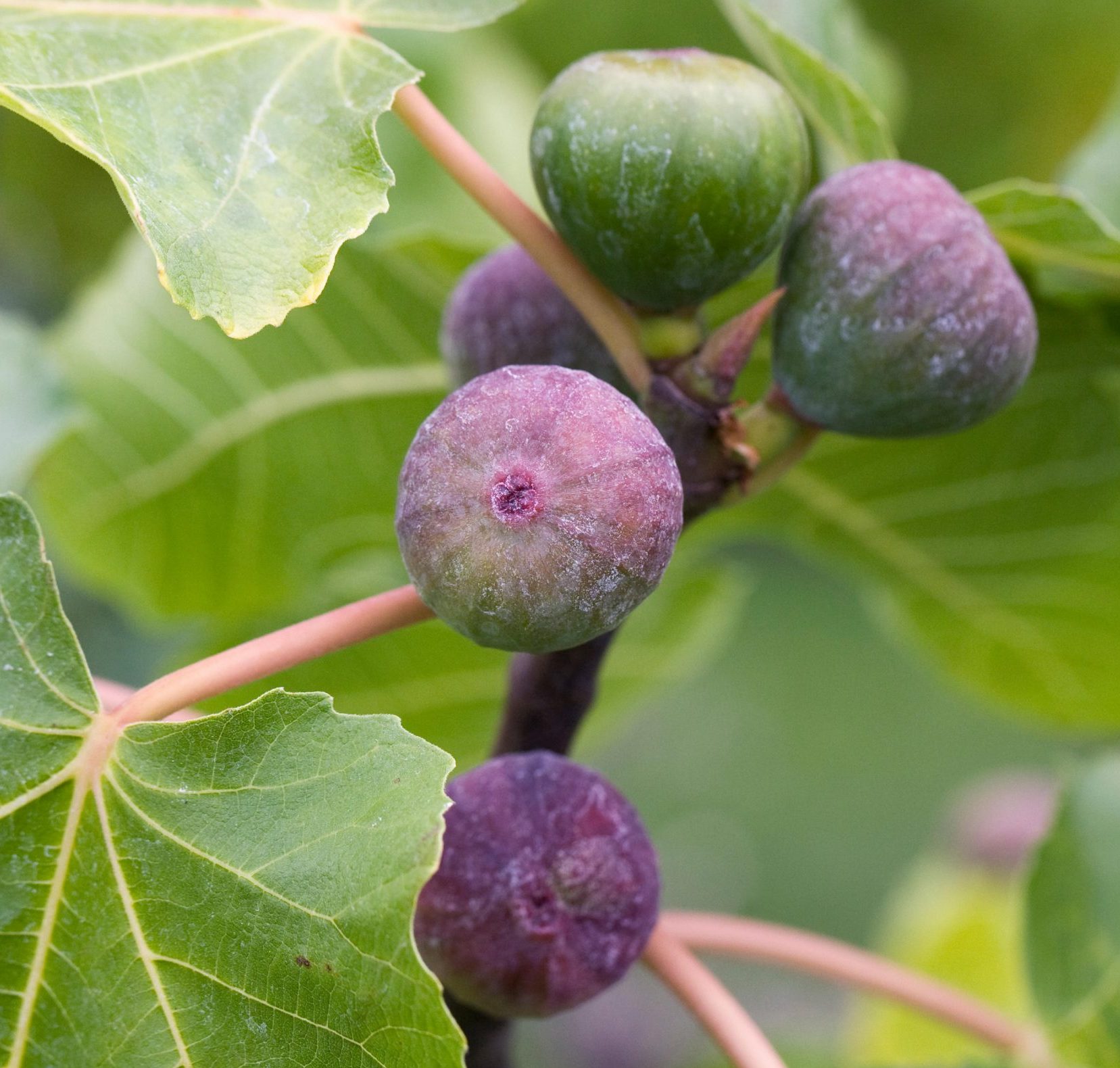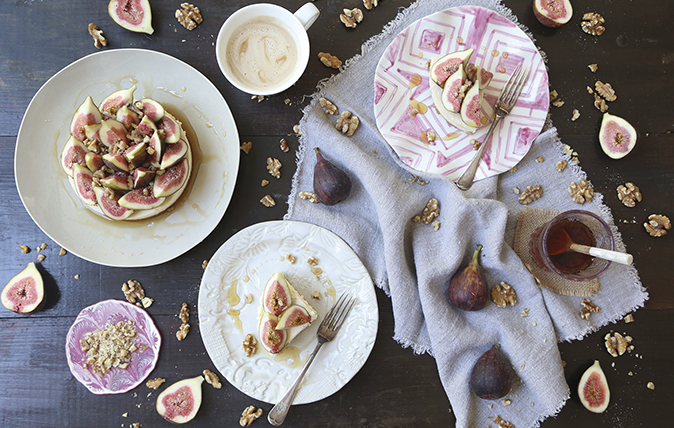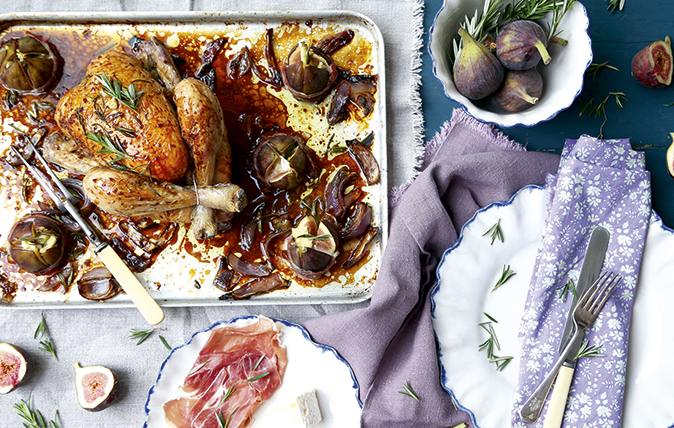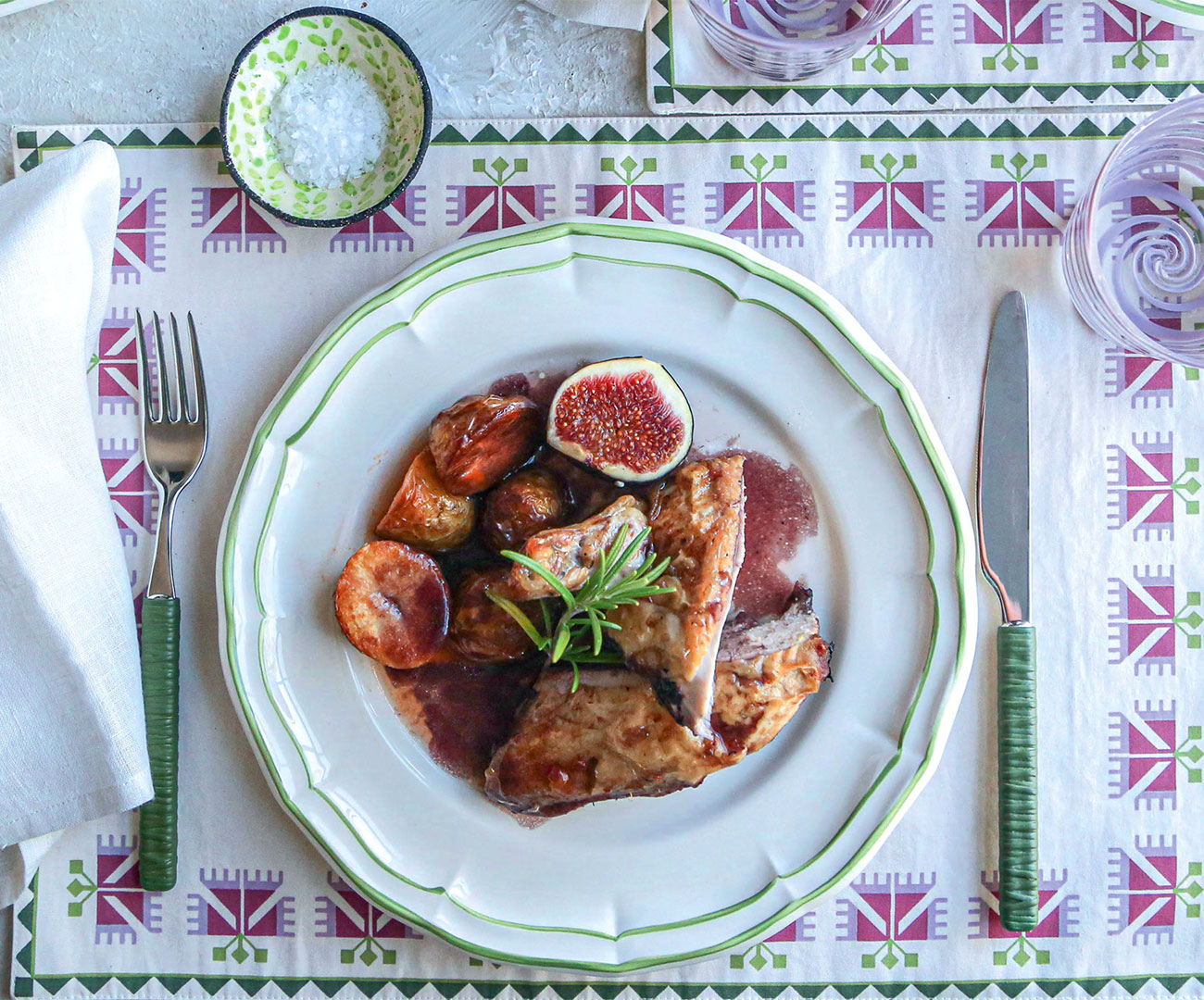How to grow your own figs that'll be 'like a feather on the tongue'
The fig is one of the most exotic fruits you will be able to grow in Britain. Mark Diacono explains how to go about it.


A fig eaten straight from the hand of the grower in a market on the Greek island of Santorini ruined me for figs for 20 years. So juicy and luscious was that fruit, and the 11 that followed it on that balmy evening, that all others I bought in this country — picked ahead of the glorious ripeness that figs are born to — felt like leather on the tongue.
A decade ago, that changed. I had the great fortune of photographing Chris Achilleos’s allotment (we've saved you Googling it), tucked behind a vast roundabout in Tottenham, north London. It was in this unlikely spot, in the most incredible allotment I’ve ever seen, that I ate the most remarkable fig I’ve ever eaten. Somehow, Santorini’s finest had been trumped by these urban delights.
I sat on the train home eating more; the palm-filling fruit splitting under the burden of their own ripeness, juice running through my fingers into a carrier bag I had the good sense to place between my feet. The succulence and depth of flavour was — Chris assured me — down to choosing the sunniest of sheltered spots, prioritising flavour when choosing the variety, feeding the plant well and being ruthless when removing fruit. I resolved to plant a few myself, as soon as I could.
Despite a reputation for trickiness, figs are easy to grow if you satisfy their few requirements. A fertile, rich, well-drained soil (or compost if grown in a container) is essential and restricting their root system encourages the plant to divert some energies from green growth to fruiting: planting in a large container (a couple of feet or so in diameter) or a root-restricting bag is ideal. If you can embellish on the sun and shelter they need with a south-facing wall to reflect and radiate extra heat, they’ll repay you in quality and quantity of fruit. I apply an early-spring mulch of composted manure, followed by a fortnightly liquid seaweed feed to maintain nutrient levels and promote a healthy harvest. Daily watering of containers and through dry periods for those in the ground is crucial.
Anecdotally, it seems the most confusing aspect of growing figs is that they can produce new figs twice a year, in spring and summer, and hence have fruit of different sizes towards the end of summer. This is how you should proceed: the large, almost-ripe figs are your imminent harvest; any fruit the size of a pea or smaller will develop into next year’s harvest and should be left; and those in between haven’t time to ripen this year, are likely to toughen, split and drain the plant and should be snipped off in November.
"The fruit will tell you the moment to pick: it will become richly aromatic, delicate to the point of fragility"
You can grow figs as bushes, half-standards or trained as fans. They can be planted outside or undercover, in the ground or grown in containers. Look for a goblet framework of four to six branches, if buying a freestanding tree or bush. Pruning for these forms is simple: in spring, cut out any dead, diseased or crossing branches, remove any branch trying to become a new central leader and cut back to a bud 3in or so from the stem any long laterals that fruit only at the tip. In summer, snip off the growing tip of new shoots once six leaves have appeared to direct energy to the young fruits.
If you fancy a trained fig, I’d suggest investing in an established fan, as it saves considerable time and trouble and you will be in fruit quickly. Each spring, remove about a quarter of the oldest branches to keep the plant uncluttered and encourage new growth; in midsummer, remove buds or shoots that are growing into or out from the wall to keep the plant primarily in two dimensions. Wear gloves when pruning as the sap irritates the skin. Start low and work upwards to avoid being dripped on.
Exquisite houses, the beauty of Nature, and how to get the most from your life, straight to your inbox.
Some varieties produce brown-purple fruit, others white-green; both can be exceptional. Your choice will reflect how you intend to grow it, together with your desire to gamble a little flavour for reliability. ‘Brown Turkey’ is the most widely available, being delicious and reliable outside as well as in, but in a middling summer can lack a little sparkle. ‘Brunswick’, equally reliable outside, edges it for flavour for me. ‘Panache’ is perhaps even finer, but is a little less reliable outside, although a great choice for growing undercover. ‘Violette Dauphine’ is superb, ripens later than some and is perhaps best grown against a wall to benefit from the extra heat.
Figs usually ripen in instalments over a fortnight or so in the late-summer sun. The fruit will tell you the moment to pick: it will become richly aromatic, delicate to the point of fragility, and, if you see a sweet tear of honey in the eye of the fig, you have hit gold.
Mark Diacono grows edibles, both usual and unusual, at Otter Farm in Devon (www.otterfarm.co.uk). His book Spice: A Cook’s Companion published by Quadrille, £25, is out now

Fig, pistachio and honey tea cake
Baked into tea cake or served with Parma ham and burrata salad, just two of our favourite fig recipes to

Credit: Melanie Johnson
Recipe: Fig, walnut and maple-syrup cheesecake
The subtle flavour of figs works well in both sweet and savoury dishes.

Fig, rosemary and balsamic roasted chicken with roasted fig parcels
The flavours in this recipe will make you feel as though you're in Provence.

Credit: Melanie Johnson for Country Life
How to make roast chicken with port and figs, served with hispi cabbage and garlic-roasted potatoes
Juicy figs add perfectly subtle sweetness to savoury dishes, says our kitchen garden cook Melanie Johnson.
Mark is lucky enough to spend most of his time eating, growing, writing and talking about food. He has written fourteen award-winning books, including A Year at Otter Farm and A Taste of the Unexpected (both won Food Book of the Year, and Garden Book of the Year). Known for growing everything from Szechuan pepper to pecans to Asian pears, Mark's refreshing approach to growing and eating has done much to inspire a new generation to grow some of what they eat. He was involved in the early days of River Cottage, appearing in the TV series, and writing four River Cottage books. Mark writes to a global audience on his best-selling Substack: Mark Diacono’s Abundance.
